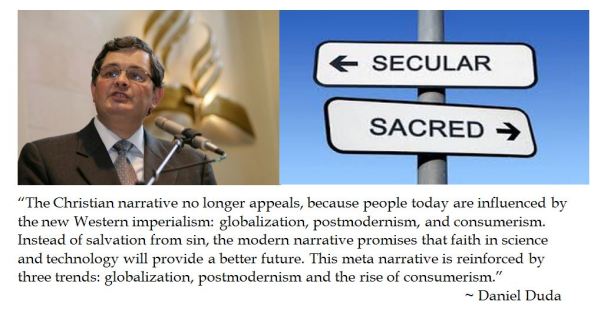Sunday, February 26, 2017
Friday, February 24, 2017
Monday, February 20, 2017
Sunday, February 19, 2017
Sunday, February 12, 2017
Friday, February 10, 2017
Thursday, February 9, 2017
BOOK REVIEW: Churchy by Sarah Condon
Churchy [Mockingbird 2016 180 p.] is a non-fictional version of chick lit which shares Sarah Condon’s unvarnished personal vignettes that seeks to lead readers towards retrospective religious reflections. It is published by Mockingbird Ministries, which strives to connect the Christian faith with the realities of everyday life in fresh down-to-earth ways. No one will mistake Sarah Condon’s Churchy musings as mundane faith history.
| "St." Flannery O'Connor |
Condon is an Episcopal priest who is married to another Episcopal priest pastoring a parish in Houston Texas. Sarah Condon’s ministry has included hospital ministry, in the dreaded “Liver Floor” filled with alcoholic patients in need of organ donations.
| Rev. Sarah Condon |
Since my Roman Catholic tradition neither has many married clergymen (much less priestesses), I was interested in understanding her vocation as well as appreciating the strains of family life with clerical duties. Honestly, this angle was not clear. Most of Churchy seemed drawn from the lens of a Churchy mother who was wont to extrapolate theological truths from the quotidian.
Condon’s view on her vocation was not crystal clear. In the introduction, she noted that:
“Josh [her husband] and I are both Episcopal priests. But most Sundays, you will see me in the pews with my children. On occasion, I stand behind the altar and celebrate communion.”
As someone who understands sacramentality as a key distinction between the laity and the ordained, it seemed like a nonchalant approach to take a priestly vocation yet to only feel obliged to “stand behind the altar” from time to time.
Regarding her role as an off hours hospital chaplain, Condon conceded that she often hears the awkward inquiry: “What do you do for a living?” She modestly asserts that she utters a ratio 70%-30% stupid to wise things while “bumbling around” hospital wards. This underplays the vital mission of just being present to those who may be on the precipice of death. Such companioning in Christ echoes tenants of Ignatian spirituality which Pope Francis has been championing during his papacy.
In the chapter which contains the Cereal Aisle Stranger section, Sarah Condon wrote:
“And there is the issue of me telling strangers what my husband and I do for a living while standing in front of a row of Fruit Loops.”
Kind of surreal small talk in the Cereal Section. Yet the way that Sarah described the query as being about what they did for a living rather than refer to their priestly vocations or ministries. That particular turn of phrase niggled at me.
Condon’s later reflections on her household concluded:
“Meanwhile, I bring in some income with writing and part-time ministry work, put food in the crock pot, spend an incredible amount of time with my children and talk on the phone to my mom, a lot.”
Sarah’s description of her role is a dose of honesty mixed in with a good measure of self-deprecating humor. However, it begs a poignant question –Should ordination be deemed just a part time job or a vocation of sacerdotal service to the people of God? It is certainly unusual for a priest to be married to a priest while raising a family. I again wonder about how there can be sufficient self sacrifice to the needs of the faithful. Can active priests really be part-timers?
Irregardless of that dialectic, Sarah Condon does not easily fit into feminist stereotypes. In reflecting on her early attitudes towards her marriage that:
“[I]t was easier to think of myself as a woman liberated from role of ‘wife’ than it was to think of myself as a co-signer in covenant of sickness and health.”
That liberated attitude along with being a priest being married to a priest might lead one to believe that Condon had totally signed unto the feminist agenda. Yet Condon rues the Episcopal Church’s expectation that of a feminist art installation as a spiritual superhero who be both a real mother as well as a mother in ministry. Sarah also chaffed at feeling as if women priests are figuratively shoved through male shaped boxes, as exemplified as being required to complete an ordination exam as she was in the midst of a first trimester miscarriage.
Condon does work in some theological concepts in layman’s terms. She jars her readers attention with the theological precept that: “Humanity is a clown parade of jackwagons.” Her vivid illustration of low anthropology contrasted with high Christology. This highlights how God loves us flawed sinful men and women but his only Son redeemed us through his Cross and resurrection. She also explores how “If your boss thinks you’re awesome then you’ll become awesome” has a nexus with the imputed righteousness of Christ.
There were two poignant thoughts which I gleaned from Sarah Condon’s Churchy self-reflections. As she was being shadowed as a hospital chaplain, she was ministering to a family who had decided to withdraw life support for a dying loved one. Condon wondered why her mentor returned to the terminal patient’s room and whispered consoling phrases into her ear. That taught her that she was at the most important time in a person’s life–the deathbed. Moreover, Condon noted that hearing is the last sense to go, so it is always worth whispering love into the ears of the dying. It called to mind St. Faustina Kowalska’s recommendation to pray the Divine Mercy Chaplet at a death bed.
The other striking idea Condon borrowed from her friend's bon mot. While at a ecumenical pastors meeting in New York City, they were discussing which were their "target audiences" for planting ministries. Many participants suggested going after youth groups. But her friend puckishly suggested: “We’d like to get more middle-aged divorced women”, which underlined the need to minister to the broken-hearted. This vision sees church as a field hospital tending to those wounded and suffering from life’s battles.
While I suspect that I was not part of Churchy’s “target audience”, I can appreciate how Sarah Condon’s witty writing desultory anecdotes and contemporizing gospel lessons might inspire a modern metanoia. To wit, Lady Gaga sought Rev. Sarah Condon to hear her preach before performing at the Houston Super Bowl.
Sarah Condon should be commended for writing Churchy as an honest soul searching book as well as expressing a willingness to see God in all things.
Sunday, February 5, 2017
Thursday, February 2, 2017
Subscribe to:
Posts (Atom)








